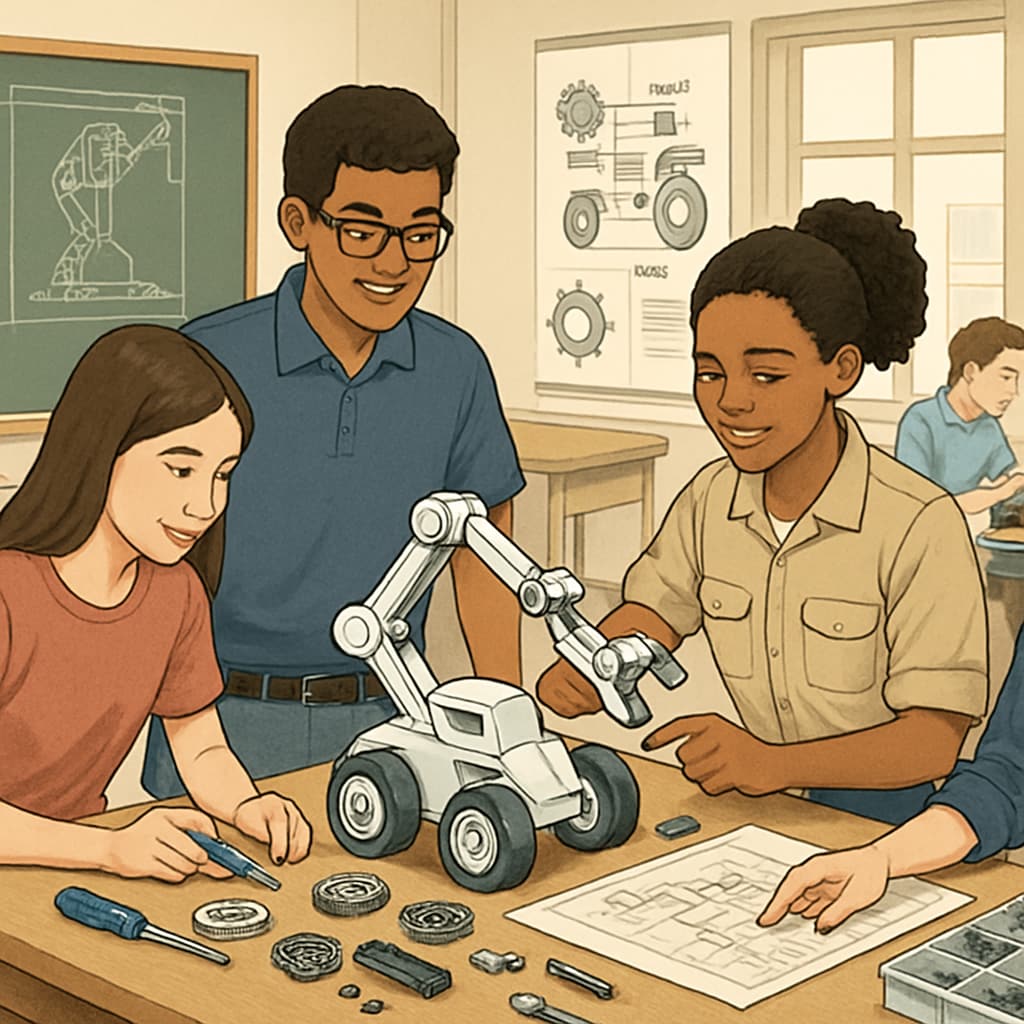In today’s K12 education landscape, achieving a balance between vocational education, traditional academic subjects, and overall educational structures is a growing challenge. As schools strive to prepare students for the demands of modern industries while maintaining strong academic foundations, integrating these two approaches effectively has become a critical priority. This article examines the complementary relationship between vocational education and traditional academics, analyzes implementation models from various school districts, and provides actionable strategies for creating an integrated curriculum that fosters holistic student development.
The Importance of Balancing Vocational Education and Academic Learning
Vocational education, which focuses on equipping students with practical job-related skills, has long been viewed as separate from traditional academic subjects like mathematics, science, and literature. However, the dichotomy between these two educational paths is increasingly being questioned. Many argue that rather than being oppositional, these two approaches can complement each other.
For example, vocational training in engineering can reinforce mathematical concepts, while culinary arts programs can enhance students’ understanding of chemistry. By integrating these disciplines, students gain both practical skills and theoretical knowledge, better preparing them for a rapidly evolving job market. Additionally, this combined approach helps students discover their strengths and passions early, empowering them to make informed career decisions.

Strategies for Integrating Vocational Education into Traditional Curricula
To achieve a balanced approach, schools need to explore innovative strategies that blend vocational education with traditional academics. Below are some key methods:
- Project-Based Learning (PBL): Encourage students to work on real-world projects that require both theoretical knowledge and practical application. For instance, constructing a bridge as part of a physics class can combine engineering skills with academic concepts.
- Interdisciplinary Courses: Develop courses that merge vocational and academic subjects. Examples include “Mathematics in Construction” or “Literature for Business Communication.”
- Industry Partnerships: Collaborate with local businesses to design programs that align with current market needs. This ensures that students acquire relevant skills while meeting academic standards.
- Flexible Scheduling: Create schedules that allow students to split their time between vocational training and academic classes without overloading them.
By adopting these strategies, schools can create a more cohesive learning environment that bridges the gap between practical skills and academic excellence.

Case Studies: Models of Successful Integration
Several school districts have pioneered innovative models that integrate vocational education with traditional academics. For example, the Swiss apprenticeship system combines classroom instruction with hands-on training, allowing students to gain both theoretical knowledge and practical experience simultaneously. Similarly, in the United States, Career and Technical Education (CTE) programs have been introduced in many high schools to integrate vocational training with core subjects.
These programs have seen significant success in reducing dropout rates and improving employment outcomes. According to a report from Britannica, students who participate in integrated vocational programs are more likely to feel engaged in their studies and pursue further education or enter the workforce confidently.
Another notable example comes from Finland, where schools emphasize collaboration between vocational institutions and academic schools. This model ensures that students receive a well-rounded education while being prepared for specialized careers.
Building the Future: Recommendations for Schools
To build an educational system that balances vocational education and traditional academics, schools must adopt a forward-thinking approach. Here are some recommendations:
- Curriculum Redesign: Design curricula that integrate vocational and academic subjects, ensuring that neither is treated as secondary.
- Teacher Training: Provide professional development for teachers to help them deliver interdisciplinary lessons effectively.
- Student Counseling: Offer guidance programs that help students identify their interests and choose balanced education paths.
- Policy Support: Advocate for policies that fund integrated education models and encourage collaboration between schools and industries.
By implementing these measures, schools can create an education structure that not only meets the demands of the 21st-century workforce but also nurtures students’ intellectual and practical growth.
In conclusion, achieving a balance between vocational education and traditional academics is essential for preparing students for a dynamic future. By integrating these two approaches, schools can provide a comprehensive education that equips students with the skills and knowledge needed to thrive in both their personal and professional lives.
For more insights into balancing education systems, explore additional resources like the Education page on Wikipedia.


